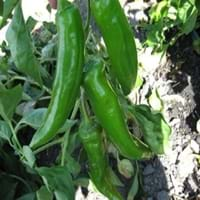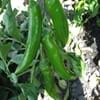Life Span
Perennial
Perennial
Origin
Mexico, Central America, South America
North America, United States, Northeastern United States, Mid-Atlantic United States, Southeastern United States, North-Central United States, South-Central United States, Texas
Types
Ancho chili
not available
Habitat
Fertile bottom land
Boggy areas, Fens, Fields, meadows, Swamps, Woodlands
USDA Hardiness Zone
5-12
4-9
Sunset Zone
A1, A2, A3, H1, H2, 1a, 1b, 2a, 2b, 3a, 3b, 4, 5, 6, 7, 8, 9, 10, 11, 12, 13, 14, 15, 16, 17, 18, 19, 20, 21, 22, 23, 24
1a, 1b, 2a, 2b, 3a, 3b, 4, 5, 6, 7
Habit
Upright/Erect
Thicket/Colonizing
Flower Color
White, Green, Ivory
Not Available
Flower Color Modifier
Bicolor
Not Available
Fruit Color
Red, Green, Orange Red
Red
Leaf Color in Spring
Green
Not Available
Leaf Color in Summer
Green
Not Available
Leaf Color in Fall
Green, Black
Not Available
Leaf Color in Winter
Not Available
Not Available
Leaf Shape
Ovate
Oblovate
Plant Season
Summer, Fall
Spring, Fall, Winter
Sunlight
Full Sun
Full Sun, Partial Sun
Growth Rate
Medium
Medium
Type of Soil
Loam
Clay, Loam
The pH of Soil
Neutral
Acidic, Neutral, Alkaline
Soil Drainage
Well drained
Average
Bloom Time
Late Spring, Early Summer, Summer, Late Summer, Indeterminate
Late Spring
Tolerances
Drought
Not Available
Where to Plant?
Container, Ground, Pot
Ground, Pot
How to Plant?
Seedlings
Divison, Seedlings
Plant Maintenance
Medium
Medium
Watering Requirements
Average Water Needs, Do Not over Water, Requires regular watering
Keep the ground moist but not water-logged
In Summer
Lots of watering
Lots of watering
In Spring
Moderate
Moderate
In Winter
Average Water
Average Water
Soil pH
Neutral
Acidic, Neutral, Alkaline
Soil Type
Loam
Clay, Loam
Soil Drainage Capacity
Well drained
Average
Sun Exposure
Full Sun
Full Sun, Partial Sun
Pruning
Remove damaged leaves, Remove dead branches, Remove dead leaves, Remove dead or diseased plant parts, Remove deadheads
Prune after flowering, Prune in early spring, Remove damaged leaves, Remove dead branches, Remove dead leaves
Fertilizers
5-10-10 fertilizer
All-Purpose Liquid Fertilizer, Compost, Fertilize every year, Mulch, Nitrogen
Pests and Diseases
Red blotch
Aphids, Apple Maggot, Fall Webworm, Red blotch, Scale
Plant Tolerance
Drought
Not Available
Flower Petal Number
Single
Not Available
Foliage Texture
Medium
Not Available
Foliage Sheen
Glossy
Not Available
Allergy
Constipation, Diarrhea, Headache, Hives, Itchiness, Low blood pressure, Nausea, Runny nose, Sore eyes, Sore Throat, Swelling in the face, Swollen Lips, Vomiting
Not Available
Aesthetic Uses
Not Used For Aesthetic Purpose
Showy Purposes
Beauty Benefits
Not Available
Not Available
Environmental Uses
Air purification
Air purification
Medicinal Uses
Not Available
Not Available
Part of Plant Used
Fruits, Seeds
Fruits
Other Uses
Used As Food
Used As Food, Used as Ornamental plant
Used As Indoor Plant
Yes
No
Used As Outdoor Plant
Yes
Yes
Garden Design
Bedding Plant, Container, Edible, Herb / Vegetable, Mixed Border, Tropical
Cutflower, Mixed Border, Screening, Wind Break
Botanical Name
CAPSICUM annuum 'Anaheim'( Longum Group)
ARONIA arbutifolia
Common Name
Anaheim Chile, Hot Pepper
Red Chokeberry
In Hindi
Anaheim Chile Plant
लाल Chokeberry
In German
Anaheim Chile Pflanze
Rote Apfelbeere
In French
Anaheim Chili Plante
Red Chokeberry
In Spanish
Planta de Chile Anaheim
rojo Chokeberry
In Greek
Anaheim Χιλή Φυτών
κόκκινο Chokeberry
In Portuguese
Anaheim Chile Planta
Red Chokeberry
In Polish
Anaheim Chile roślin
Red aronii
In Latin
Planta Anaheim Chile
arbutifolia
Phylum
Magnoliophyta
Magnoliophyta
Class
Magnoliopsida
Magnoliopsida
Family
Solanaceae
Rosaceae
Clade
Asterids, Eudicots
Angiosperms, Eudicots, Rosids
Tribe
Not Available
Not Available
Subfamily
Not Available
Not Available
Number of Species
Not Available
Not Available
Properties of Anaheim Chili and Red Chokeberry
Wondering what are the properties of Anaheim Chili and Red Chokeberry? We provide you with everything About Anaheim Chili and Red Chokeberry. Anaheim Chili doesn't have thorns and Red Chokeberry doesn't have thorns. Also Anaheim Chili does not have fragrant flowers. Anaheim Chili has allergic reactions like Constipation, Diarrhea, Headache, Hives, Itchiness, Low blood pressure, Nausea, Runny nose, Sore eyes, Sore Throat, Swelling in the face, Swollen Lips and Vomiting and Red Chokeberry has allergic reactions like Constipation, Diarrhea, Headache, Hives, Itchiness, Low blood pressure, Nausea, Runny nose, Sore eyes, Sore Throat, Swelling in the face, Swollen Lips and Vomiting. Compare all the properties and characteristics of these two plants. Find out which of these plant can be used as indoor plant. If you are interested to decorate your house and garden, find out aesthetic uses, compare them and select the plant which will beautify your surrounding. Along with beautification, try comparing medicinal and edible uses of Anaheim Chili and Red Chokeberry and you can choose the plant having best and most benefits.
Season and Care of Anaheim Chili and Red Chokeberry
Season and care of Anaheim Chili and Red Chokeberry is important to know. While considering everything about Anaheim Chili and Red Chokeberry Care, growing season is an essential factor. Anaheim Chili season is Summer and Fall and Red Chokeberry season is Summer and Fall. The type of soil for Anaheim Chili is Loam and for Red Chokeberry is Clay, Loam while the PH of soil for Anaheim Chili is Neutral and for Red Chokeberry is Acidic, Neutral, Alkaline.
Anaheim Chili and Red Chokeberry Physical Information
Anaheim Chili and Red Chokeberry physical information is very important for comparison. Anaheim Chili height is 45.70 cm and width 38.10 cm whereas Red Chokeberry height is 180.00 cm and width 12.70 cm. The color specification of Anaheim Chili and Red Chokeberry are as follows:
Anaheim Chili flower color: White, Green and Ivory
Anaheim Chili leaf color: Green
Red Chokeberry flower color: Not Available
- Red Chokeberry leaf color: Not Available
Care of Anaheim Chili and Red Chokeberry
Care of Anaheim Chili and Red Chokeberry include pruning, fertilizers, watering etc. Anaheim Chili pruning is done Remove damaged leaves, Remove dead branches, Remove dead leaves, Remove dead or diseased plant parts and Remove deadheads and Red Chokeberry pruning is done Prune after flowering, Prune in early spring, Remove damaged leaves, Remove dead branches and Remove dead leaves. In summer Anaheim Chili needs Lots of watering and in winter, it needs Average Water. Whereas, in summer Red Chokeberry needs Lots of watering and in winter, it needs Average Water.





